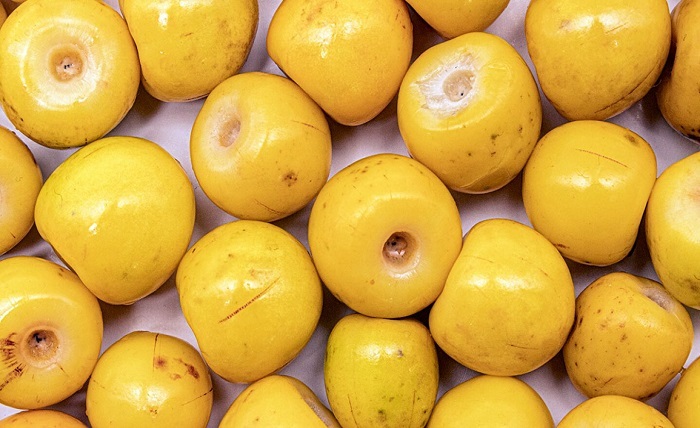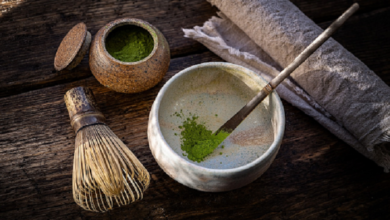Nanche: A Tropical Fruit with a Unique Flavor and Aroma

Nanche, also known as nance, is a small, round, yellow fruit that grows on a tree native to tropical America. The fruit has a strong odor and a sweet but tangy flavor that some people compare to cheese, banana, lychee, or pear. Nanche can be eaten raw or cooked, and it is used to make desserts, drinks, sauces, and fermented products.
Nanche is not only delicious but also nutritious. It is rich in vitamin C, fiber, antioxidants, and other beneficial compounds that can support your health and well-being. In this article, we will explore the benefits, uses, and precautions of nanche fruit.
Benefits of Nanche
Nanche fruit has several health benefits, such as:
- Boosting your immune system: Nanche is an excellent source of vitamin C, which is essential for your immune system function and defense against infections. A 1/2-cup (56-gram) serving of nanche provides 59% of the Daily Value (DV) for vitamin C. Vitamin C also helps your body produce collagen, which is important for your skin, bones, and joints.
- Improving your digestion: Nanche contains a good amount of dietary fiber, which can help your digestion by adding bulk to your stool and preventing constipation. A 1/2-cup (56-gram) serving of nanche provides 16% of the DV for fiber. Fiber also feeds the beneficial bacteria in your gut, which can improve your gut health and immunity.
- Protecting your cells from damage: Nanche has high antioxidant activity, which means it can protect your cells from oxidative stress and damage caused by free radicals. Oxidative stress is linked to aging and chronic diseases such as cancer, diabetes, and heart disease. Nanche contains vitamin C, vitamin E, carotenoids, and phenolic compounds that act as antioxidants.
- Supporting your bone health: Nanche contains vitamin K, calcium, and magnesium, which are important minerals for your bone health. Vitamin K helps your body use calcium to build and maintain strong bones. Calcium is the main component of your bones and teeth. Magnesium helps regulate calcium levels in your body and supports bone formation. A 1/2-cup (56-gram) serving of nanche provides 11% of the DV for vitamin K, 5% of the DV for calcium, and 6% of the DV for magnesium.
Uses of Nanche
Nanche fruit can be used in various ways, such as:
- Eating it raw: You can enjoy nanche fruit raw as a snack or dessert. You can peel it or eat it with the skin on. The skin is edible but may be bitter or tough for some people. You can also add nanche to salads, smoothies, yogurt, or cereal for a burst of flavor and nutrition.
- Cooking it: You can cook nanche fruit to make jams, pies, cakes, muffins, or other baked goods. You can also use nanche to make sauces or chutneys for meat or fish dishes. Cooking nanche may reduce its vitamin C content but enhance its flavor and aroma.
- Fermenting it: You can ferment nanche fruit to make alcoholic beverages such as chicha or crema de nance. Chicha is a beer-like drink that is popular in Panama and parts of Latin America. Crema de nance is a rum-like drink that is made by distilling nanche with sugar cane alcohol. Fermenting nanche may increase its alcohol content but decrease its nutritional value.
Precautions of Nanche
Nanche fruit is generally safe to eat for most people, but there are some precautions to consider:
- Allergy: Some people may be allergic to nanche or its components. Symptoms of an allergic reaction may include itching, swelling, rash, hives, or difficulty breathing. If you experience any of these symptoms after eating nanche, seek medical attention immediately.
- Pregnancy and breastfeeding: There is not enough evidence to determine the safety of nanche during pregnancy or breastfeeding. Therefore, it is advisable to avoid or limit its consumption during these periods. Consult your doctor before eating nanche if you are pregnant or breastfeeding.
- Medication interaction: Nanche may interact with some medications, such as blood thinners or insulin. Nanche contains vitamin K, which can affect the blood clotting process and interfere with blood thinners. Nanche also contains carbohydrates, which can affect the blood sugar levels and interfere with insulin. If you are taking any medication, consult your doctor before eating nanche.
Conclusion
Nanche is a tropical fruit that has a unique flavor and aroma. It can be eaten raw or cooked, and it is used to make desserts, drinks, sauces, and fermented products. Nanche is also nutritious and has several health benefits, such as boosting your immune system, improving your digestion, protecting your cells from damage, and supporting your bone health. However, nanche may also have some drawbacks, such as causing allergy, affecting pregnancy and breastfeeding, and interacting with medication. Therefore, you should be careful and consult your doctor before eating nanche. Nanche is a fruit that can offer you a delicious and healthy treat, but you should also be aware of its potential risks.
Read more about: 99-math




